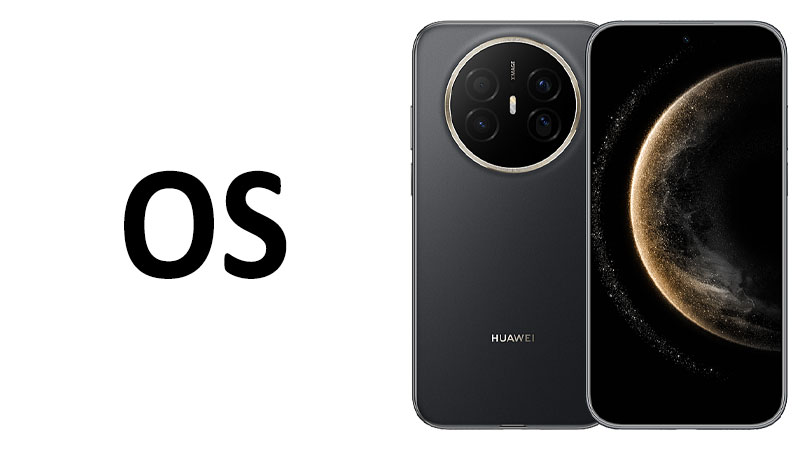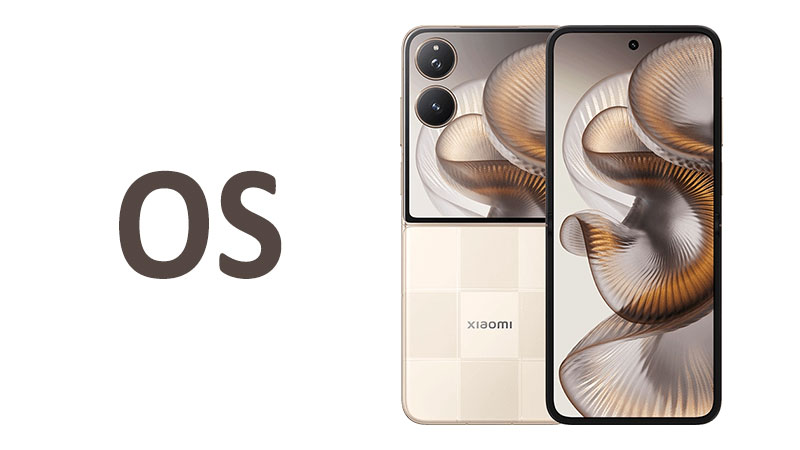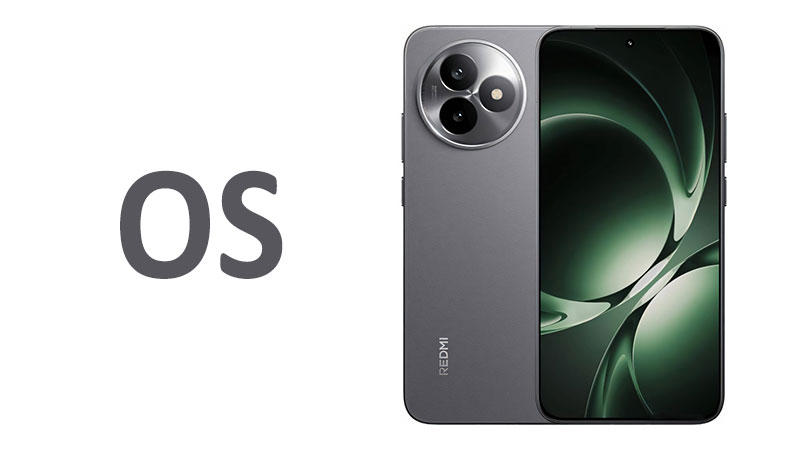The Huawei Mate 70 Air OS is defined by the powerful HarmonyOS 5.1. This proprietary platform represents a major evolution in mobile software design. It is built to offer peak performance and seamless cross-device intelligence. HarmonyOS 5.1 merges cutting-edge Pangu AI with a refined user interface. This sophisticated software is essential to the Mate 70 Air’s flagship performance. Understanding this deep system integration is critical for prospective users. This article provides a comprehensive analysis of the Mate 70 Air’s operating system. The review focuses on user-centric features, system efficiency, and ecosystem benefits. We will explore how this OS is setting a new standard for mobile interaction.
The Core Platform: A Deep Dive into HarmonyOS 5.1 Architecture
HarmonyOS 5.1 forms the fundamental operating system for the Huawei Mate 70 Air. The system is built upon Huawei’s advanced microkernel architecture. This structure is designed for exceptional cross-device connectivity and extremely low latency. It is a significant shift from older, traditional monolithic operating systems. The core technology guarantees outstanding stability and efficient resource management. This specialized focus prioritizes speed and efficiency above all else. This approach is perfectly suited for the Mate 70 Air’s premium hardware.
The most potent technical element is the Distributed Technology Framework. This framework allows applications to function across various devices instantly. For instance, a single running task can leverage the resources of the phone, a connected tablet, and a smart screen simultaneously. This capability creates a single, unified Super Device experience for the user. Data and digital services flow seamlessly and instantly between these connected products. The user enjoys a cohesive digital life without unnecessary digital barriers.
HarmonyOS 5.1 introduces substantial updates to the proprietary ARK Compiler. This compiler is essential for optimizing app execution speed and managing power consumption. It allows applications to run much closer to native machine code execution. This results in significantly faster app launch times. It also delivers much smoother, more fluid in-app animations. These critical technical improvements translate directly to the ultra-fast feel of the Mate 70 Air. The overall OS delivers a measurable, noticeable improvement in system responsiveness.
Visual Design and User Experience Enhancements
The Mate 70 Air OS receives a comprehensive visual overhaul with HarmonyOS 5.1. The interface is now much cleaner and highly adaptive. It features a new, refined design language that focuses on “Aesthetic Fluidity.” This visual design incorporates more natural, subtle, and consistent system animations. Screen transitions between applications and menus are instantaneous yet visually pleasing. The overall appearance is modern, minimal, and exceptionally polished. This enhances the premium feel of the device.
A key usability feature is the extensively upgraded Service Widgets system. These components are dynamic, interactive cards for various applications. Users can access critical information or perform quick actions directly from the home screen. This powerful feature eliminates the need to open the full application every time. Widgets are now smarter and resize fluidly based on the user’s layout choice. They can also adapt their displayed information based on context, like time of day or current location. This elevates at-a-glance utility and productivity for the user.
The new Desktop Control Center is a major improvement in user convenience. It offers instant access to core system settings and all Super Device connections. Users can now easily manage every connected Huawei device from one central hub location. Connecting a new Bluetooth smartwatch or a pair of wireless earbuds is faster. The process is now more intuitive and less complicated than ever before. This streamlined control center successfully simplifies the complex management of a broad device ecosystem.
HarmonyOS 5.1 also brings critical refinements to the Multi-Window functionality. Users can now open applications in highly flexible and versatile floating windows. These windows can be moved, resized, and minimized quickly and easily. This feature allows for superior split-screen and multitasking efficiency. The Mate 70 Air excels as a productivity device largely because of this flexible feature. You can effortlessly chat with a colleague while watching a training video without switching context.
The Integrated AI and Intelligence Layer
Artificial Intelligence is now deeply and fundamentally integrated into HarmonyOS 5.1. Huawei’s own powerful Pangu AI model powers many intelligent, system-wide features. This native integration positions the Mate 70 Air as a truly intelligent, adaptive smartphone. The system learns user habits. It can successfully anticipate user needs and automate complex daily routines. This proactive capability saves users significant time.
The new AI-Powered Smart Folders are a particularly notable inclusion. These folders automatically group applications based on logical usage and contextual relevance. They then strategically present the most relevant apps at the top of the folder view. This saves significant time searching through a large number of app icons. The system continuously learns user habits and constantly refines the organizational logic. This intelligence simplifies the home screen experience.
Pangu AI also significantly enhances the native system search function. The comprehensive AI Search provides concise, instantly generated summaries for complex web queries. This feature saves valuable time that would be spent reading multiple articles. It also supports highly contextual, on-device search capabilities. Users can instantly find specific text within photos, files, or application documents. This powerful retrieval tool maximizes the speed of accessing information.
Furthermore, AI is heavily utilized in the completely new Smart Voice Assistant. The assistant is more conversational, fluent, and context-aware than previous versions. It can seamlessly maintain the thread of a conversation across multiple related commands. It efficiently manages calendar entries, sets complex reminders, and controls various smart home devices. This deep intelligence layer makes daily interaction with the device much smoother and more natural.
HarmonyOS 5.1 also introduces enhanced AI photo editing capabilities within the Gallery. The Pangu model can perform smart object removal and image enhancement. Users can easily erase unwanted elements from a picture with just a few taps. It also offers advanced photo categorization. The system automatically tags images by content, location, and date, making them easier to find.
Performance, Efficiency, and Device Longevity
HarmonyOS 5.1 is expertly engineered for maximizing performance and extending battery life. The Mate 70 Air benefits from highly advanced resource scheduling within the core OS. The system intelligently and dynamically allocates CPU and GPU power to currently running tasks. This guarantees maximum, lag-free speed for foreground applications. Simultaneously, it effectively minimizes unnecessary background resource usage.
The OS includes major, focused optimizations for the device’s display technology. It fully supports the Mate 70 Air’s high refresh rate screen capability. The system dynamically adjusts the refresh rate based on the specific content displayed. It drops to a lower, power-saving rate for static images or reading text. It instantly ramps up to 120Hz for fast scrolling or intensive gaming sessions. This smart Adaptive Refresh Rate management delivers both visual smoothness and extended battery efficiency.
HarmonyOS 5.1 also introduces much refined memory management protocols. It utilizes advanced compression techniques for applications running inactive in the background. This action effectively frees up available RAM for immediate current tasks. The Mate 70 Air maintains high multitasking speeds without common memory-related slowdowns. The system keeps essential, frequently used applications prepared for instant relaunch. This powerful optimization is crucial for long-term device performance and user satisfaction.
The new battery-saving algorithms are highly intelligent and proactive. The system efficiently detects power-hungry apps running excessively in the background. It then prompts the user to restrict their activity to conserve power. The OS also learns the user’s specific charging patterns over time. It can intelligently optimize the charging speed and duration to extend overall battery longevity. This strong focus on the long-term health of the device is a key selling point for buyers.
Comprehensive Privacy and Security Architecture
Security is always a primary, non-negotiable priority for the Huawei Mate 70 Air OS. HarmonyOS 5.1 features a remarkably robust, multi-layered protection architecture. This system is designed to safeguard all user data and personal identity effectively. The inherent microkernel design itself provides fundamental security benefits. It inherently limits the permissions of all non-essential system processes. This minimizes the attack surface significantly.
The OS introduces highly refined application permission controls for all users. Users now have exceptionally granular control over exactly what personal data apps can access. For example, you can grant one-time access to the camera or microphone. The system actively monitors all running applications for any suspicious behavior or deviations. It provides immediate, clear warnings for potential privacy breaches to the user. This commitment to heightened transparency empowers the user to take control.
A major security update is the completely new Identity Protection Service. This critical service utilizes advanced biometric authentication methods built into the device. It ensures that only the authorized user can access sensitive application data and private files. It also provides secure, sandboxed storage within the phone for all payment information. This critical feature makes all mobile transactions extremely safe and compliant.
HarmonyOS 5.1 further enhances secure data transmission through its HyperTransfer protocol. All data moving between Super Device components is end-to-end encrypted automatically. This comprehensive encryption protects all files, messages, and screen-sharing sessions from any form of external interception. This robust security framework provides significant peace of mind for the user. The entire system is engineered to meet strict global data protection standards.
Seamless Cross-Device Experience and Ecosystem
The single greatest competitive strength of the Mate 70 Air OS is its cross-device integration. The core HarmonyOS Super Device concept reaches its most advanced form in version 5.1. The Mate 70 Air seamlessly acts as the central brain for the user’s entire personal ecosystem. Connecting and managing a diverse collection of Huawei products is now effortless. It truly simplifies digital life.
The updated Super Device interface greatly simplifies the initial device pairing process. Users can simply drag and drop the icons of nearby recognized devices onto the central phone icon. This action instantly establishes a secure, collaborative connection for resource sharing. Sharing a document, transferring an active call, or extending a display takes only a few seconds. This high degree of fluidity is the definition of a truly unified digital experience.
The Multi-Screen Collaboration feature is significantly more capable than before. Users can now project the Mate 70 Air screen onto a nearby Huawei PC or tablet. They can then interact with the phone directly using the computer’s keyboard and mouse peripherals. You can easily edit phone documents using PC software. You can also transfer files simply by dragging and dropping them between screens. This functionality quickly transforms the phone into a versatile mobile workstation.
HarmonyOS 5.1 introduces HyperTerminal connectivity optimization. It ensures ultra-low latency for all linked devices within the Super Device setup. This optimization is crucial for demanding tasks like multi-device gaming or real-time remote-control applications. The audio handoff between earbuds, the phone, and a connected speaker is virtually instantaneous. This fluid continuity sets the Huawei ecosystem experience apart from all competitors.
Comparison and Competitive Analysis
The Mate 70 Air OS is a premium flagship product. Therefore, its software must deliver unique and compelling advantages to the user. Comparing HarmonyOS 5.1 to previous Huawei versions and global rivals highlights its true strengths. The OS successfully differentiates itself through its unique distributed architecture.
HarmonyOS 5.1 versus HarmonyOS 4.0
HarmonyOS 5.1 is an iterative but critically important refinement of the previous generation. HarmonyOS 4.0 was already recognized as fast and was the first to widely introduce the Super Device concept. Version 5.1 focuses heavily on deep Pangu AI integration and enhancing core system stability. The Pangu AI model is far more deeply integrated into 5.1 than its earlier presence in its predecessor.
Overall performance gains are also quite noticeable in the new version. The updated ARK Compiler in 5.1 offers better, more efficient hardware utilization. This directly translates to faster application launch times and a smoother system feel. While 4.0 was deemed fast, 5.1 delivers an instantaneous user feel. The overall visual design is also more polished and aesthetically pleasing in 5.1. The system features more nuanced and natural transition animations. Furthermore, the cross-device security protocols are substantially strengthened in this latest update.
Huawei Mate 70 Air OS versus Competitors
The Mate 70 Air OS directly competes with Apple’s iOS and specialized Google Android skins. iOS is globally known for its extreme simplicity and mature app ecosystem. Android is praised for its open-source nature and high level of customization. HarmonyOS 5.1 successfully differentiates itself by being fundamentally ecosystem-first in its design.
The robust Super Device capability is arguably the biggest competitive advantage. It clearly surpasses the connectivity depth offered by standard AirPlay or Android’s limited casting features. No other global competitor offers such seamless, system-level task flow across all device types. This includes mobile phones, tablets, PCs, and smartwatches. This is a massive differentiator.
Performance is another strong advantage for HarmonyOS. The specialized microkernel and ARK Compiler ensure a speed that effectively rivals stock Android and even iOS. However, the Huawei Mate 70 Air OS still faces challenges in the global app availability market. Android and iOS currently dominate in terms of sheer application numbers globally. Despite this, Huawei continues to grow its own native app support rapidly in key regions. For users already deeply invested in the Huawei ecosystem, HarmonyOS 5.1 is immensely compelling.
Pros, Cons, and Essential Buyer Takeaways
The advanced software stack on the Mate 70 Air presents a compelling and feature-rich package. Like any complex system, it includes clear advantages and necessary trade-offs. Prospective buyers must consider these points before making a purchase decision.
Advantages of HarmonyOS 5.1
Superior cross-device integration is the most significant benefit. The Super Device feature offers unparalleled productivity and convenience. It creates a truly single, unified digital experience for the user. The system’s base performance is extremely fast and power efficient. The microkernel and ARK Compiler ensure consistent, long-term speed with minimal system slowdown. Deep AI integration, powered by the Pangu model, provides highly intelligent user assistance. This power is evident in smart search, file organization, and natural voice control. The robust, proprietary security architecture ensures that all user data and privacy are strongly protected. The system features granular controls and encrypted data transfer protocols.
Potential Drawbacks
The largest potential drawback remains the application ecosystem maturity. While rapidly growing, the HarmonyOS native app store may still lack certain specialized global applications. Some users who are highly accustomed to Google Mobile Services may find the transition challenging initially. The system’s deep and expansive feature set does require a learning curve. New users might find the sheer volume of Super Device and Pangu AI options slightly overwhelming at first. The high level of integration means that the absolute maximum benefit is fully realized only when using multiple Huawei hardware components.
Essential Points for Prospective Buyers
Buyers should prioritize the Mate 70 Air if they currently own other Huawei products. The seamless HyperTerminal experience is the undeniable key selling point of this device. The phone is perfectly suited for professionals and power users who focus on heavy multitasking. The flexible floating windows and PC collaboration features are immensely powerful tools. Be prepared to rely primarily on Huawei’s own AppGallery for application downloads. The app ecosystem is vast but still undergoing rapid global maturation. Users seeking maximum operating system simplicity might prefer a less feature-dense OS. However, those who value control, deep connectivity, and cutting-edge performance will find the Mate 70 Air OS exceptional.
Conclusion
The Huawei Mate 70 Air OS, powered by HarmonyOS 5.1, is a groundbreaking mobile platform. It successfully delivers a highly optimized, intelligently assisted, and deeply connected user experience. The OS expertly leverages its distributed microkernel design for industry-leading performance and power efficiency. It also provides an extremely robust foundation for system security and long-term stability.
HarmonyOS 5.1’s greatest success is the fully matured Super Device ecosystem. This feature truly allows the Mate 70 Air to function as the central brain of a vast connected digital world. Features like Pangu AI integration and refined multi-screen collaboration boost user productivity significantly. These unique innovations successfully differentiate the OS from all its global competitors.
While the app ecosystem continues its focused global expansion, the Mate 70 Air offers substantial advantages in speed and integration. It is the ideal device for users seeking a highly integrated, high-performance mobile experience. The software is sophisticated, exceptionally fast, and extremely feature-rich. This ensures the Mate 70 Air is not just a phone but a seamless digital hub for years to come.
FAQ
What is the official operating system of the Huawei Mate 70 Air?
The Huawei Mate 70 Air runs on the official HarmonyOS 5.1. This is the very latest version of Huawei’s self-developed, proprietary operating system.
Does HarmonyOS 5.1 support Google services?
Huawei phones utilizing HarmonyOS, including the Mate 70 Air, typically do not include pre-installed Google Mobile Services. Users access applications via the Huawei AppGallery.
What is the Super Device feature in HarmonyOS 5.1?
Super Device allows multiple nearby Huawei products to seamlessly connect and collaborate instantly. This creates a unified system where devices share resources and tasks freely.
How does HarmonyOS 5.1 improve performance on the Mate 70 Air?
It uses the proprietary ARK Compiler and a microkernel architecture. This combination optimizes application execution speed, lowers power consumption, and enhances overall system responsiveness.
Is HarmonyOS 5.1 focused on security?
Yes, absolutely. HarmonyOS 5.1 features a robust security architecture. This includes granular permission controls and secure, encrypted data transfer between all connected devices at all times.



